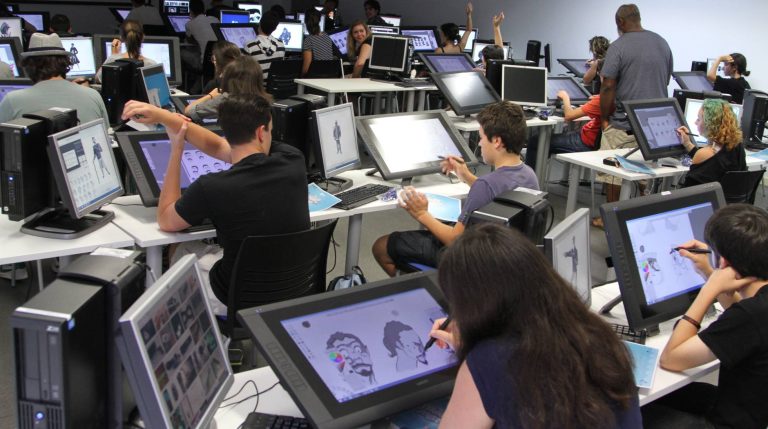Australia’s superannuation system is a cornerstone of retirement planning for residents, but for US expatriates living down under, it presents a unique set of complexities. As 2025 unfolds, understanding the nuances of superannuation, particularly in light of US tax obligations, is crucial for financial well-being. This guide aims to demystify Australian superannuation for US expats, offering clear steps and essential filing requirements.
What is Superannuation?
Superannuation, or “super,” is Australia’s compulsory retirement savings system. Employers are required to contribute a percentage of an employee’s earnings into a superannuation fund on their behalf. These funds are invested to grow your retirement nest egg.
For the 2025 financial year (starting July 1, 2025), the Superannuation Guarantee (SG) rate – the minimum an employer must contribute – is set to increase to 12% of your ordinary time earnings (OTE). This represents a significant step towards bolstering retirement savings for all workers in Australia.
Key Aspects of Superannuation for US Expats in 2025
While the Australian superannuation system is designed to be straightforward for local residents, US expats face additional considerations due to the US’s citizenship-based taxation system. This means that even while living and working in Australia, US citizens are generally still required to report their worldwide income, including superannuation, to the IRS.
Here are some key areas to understand:
- Taxation of Contributions and Earnings: In Australia, employer contributions and earnings within your super fund are taxed at a concessional rate (typically 15% on contributions and investment earnings). However, the US Internal Revenue Service (IRS) may view these differently. Employer contributions might be considered taxable income in the US in the year they are made, and earnings within the fund could be subject to annual US taxation, even if not distributed.
- Superannuation as a Foreign Trust or Pension: The IRS doesn’t have definitive guidance on how to classify Australian superannuation. It may be treated as a foreign trust, which comes with complex reporting requirements (Form 3520, Form 8621 for Passive Foreign Investment Companies (PFIC) if certain investments are held). Alternatively, it might be classified as a foreign pension, potentially offering more favorable tax treatment, though this is not consistently applied.
- Withdrawals and Distributions: While lump-sum withdrawals from super after age 60 are typically tax-free in Australia, the US may tax these as ordinary income. The availability of foreign tax credits to offset US tax liability will depend on the specific classification of your super fund and the US-Australia tax treaty.
- Division 296 Tax: From July 1, 2025, a new Division 296 tax introduces an additional 15% tax on earnings from superannuation balances exceeding $3 million. This applies irrespective of residency status, meaning high-balance US expats need to be aware of its potential impact on their retirement strategy.
Superannuation Guide: Steps for US Expats
Navigating superannuation as a US expat requires proactive planning. Here’s a step-by-step guide:
Step 1: Understand Your Australian Tax Residency Status Your Australian tax residency status determines how you are taxed on your income, including super. Generally, if you reside in Australia for six months or more, you’ll be considered an Australian tax resident. This impacts how your super contributions and earnings are treated. The ATO uses several tests (Resides test, Domicile test, 183-day test, Commonwealth Superannuation test) to determine residency.
Step 2: Get a Tax File Number (TFN) If you haven’t already, obtain an Australian Tax File Number (TFN). This is essential for all your Australian tax and superannuation affairs.
Step 3: Choose a Super Fund While your employer will likely have a default fund, you generally have the choice to select your own. When choosing, consider:
- Fees: Compare administration, investment, and other fees.
- Investment Options: Look for a fund that aligns with your risk tolerance and investment goals.
- Insurance: Most super funds offer default insurance cover (death, total and permanent disability, income protection). Review these carefully.
- Performance: While past performance isn’t a guarantee, it can provide an indication of the fund’s management.
Step 4: Consolidate Your Super (If Applicable) If you’ve had multiple employers in Australia, you might have multiple super accounts. Consolidating them can save on fees and make management easier. You can use the ATO’s online services to find and consolidate lost or multiple super accounts.
Step 5: Understand US Tax Implications and Filing Requirements This is perhaps the most critical step for US expats. Due to US tax laws, your Australian superannuation may trigger several US filing requirements:
- FBAR (FinCEN Form 114): If the combined value of all your foreign financial accounts (including superannuation) exceeds $10,000 at any point during the calendar year, you must file an FBAR. This is filed electronically through FinCEN’s BSA E-Filing System.
- Form 8938 (Statement of Specified Foreign Financial Assets): This form is filed with your regular US tax return if your foreign financial assets (including superannuation) exceed certain thresholds. For single filers living abroad, this is generally $200,000 on the last day of the tax year or $300,000 at any time during the year.
- Form 3520 (Annual Return to Report Transactions With Foreign Trusts): If your superannuation is classified as a foreign trust, you may need to file this form to report contributions and distributions.
- Form 8621 (Passive Foreign Investment Company – PFIC): If your superannuation fund holds certain types of investments (e.g., managed funds or ETFs), you may be required to file Form 8621. This can lead to complex calculations and potentially unfavorable tax treatment.
Step 6: Consider Professional Tax Advice Given the intricate nature of cross-border taxation, especially with superannuation, it is highly recommended to consult with a tax professional experienced in both Australian and US tax laws. They can help you:
- Determine the correct classification of your super fund for US tax purposes.
- Ensure compliance with all US filing requirements.
- Develop strategies to minimize potential double taxation.
- Advise on the implications of the new Division 296 tax if your balance is high.
Step 7: Re-evaluate Contributions While compulsory employer contributions continue, consider whether making voluntary contributions (concessional or non-concessional) is beneficial from a combined US and Australian tax perspective. In some cases, voluntary contributions that are tax-efficient in Australia might not be so in the US, potentially leading to additional US tax obligations or reporting burdens.
Step 8: Plan for Withdrawals Before reaching retirement age, strategize how and when you will access your super to minimize your US tax liability. This might involve understanding the implications of lump sum vs. pension payments and utilizing available foreign tax credits.
People Also Ask (PAA)
Q: Can I transfer my Australian superannuation to a US retirement account? A: Generally, no. Direct transfers from Australian superannuation funds to US retirement accounts like 401(k)s or IRAs are not permitted due to differing regulatory frameworks and tax treatments. Accessing your super typically requires meeting Australian “conditions of release” (e.g., reaching preservation age and retirement).
Q: Will my Australian superannuation be subject to double taxation? A: There’s a risk of double taxation for US expats, as the US taxes its citizens on worldwide income. While the US-Australia tax treaty aims to prevent double taxation, the specific classification of your superannuation by the IRS can impact this. Professional advice is essential to navigate this.
Q: What is the “preservation age” for Australian superannuation? A: Your preservation age is the minimum age you must reach before you can access your superannuation benefits. It varies based on your date of birth, typically between 55 and 60. For those born after June 30, 1964, the preservation age is 60.
Q: What happens to my super if I leave Australia permanently? A: If you are a temporary resident who has left Australia and your visa is no longer valid, you may be eligible to claim a Departing Australia Superannuation Payment (DASP). This allows you to withdraw your super balance, minus applicable tax. For Australian citizens or permanent residents who leave permanently, your super generally remains in Australia until you meet a condition of release.
Frequently Asked Questions (FAQs)
Q: What are the current Superannuation Guarantee (SG) rates? A: As of July 1, 2024, the SG rate is 11.5%. From July 1, 2025, it will increase to 12%.
Q: What are the superannuation contribution caps for 2025? A: For the 2025 financial year (starting July 1, 2024, as caps are typically indexed for the upcoming financial year), the concessional contributions cap is $30,000, and the non-concessional contributions cap is $120,000. These figures are subject to change based on indexation.
Q: How do I find lost superannuation? A: You can find any lost or unclaimed superannuation using the Australian Taxation Office (ATO) online services via myGov. You’ll need to link the ATO to your myGov account.
Q: What are the penalties for not complying with US tax reporting for my Australian super? A: Penalties for non-compliance with US reporting requirements (like FBAR and Form 8938) can be severe, including substantial fines and even criminal prosecution in some cases. It’s crucial to file accurately and on time.
Q: Should I continue contributing to my Australian super while I’m a US expat? A: This depends on your individual circumstances. While Australian employers are required to contribute, making additional voluntary contributions may not always be tax-efficient from a US perspective due to potential double taxation and complex reporting. It’s best to discuss this with a cross-border tax specialist.
Conclusion
Superannuation is a vital component of retirement planning in Australia. For US expats, understanding its interaction with US tax laws is paramount. By taking proactive steps to comprehend your obligations, accurately file necessary forms, and seek expert advice, you can effectively manage your Australian superannuation and ensure a secure financial future, no matter which side of the Pacific you call home.












 Bitcoin
Bitcoin  Ethereum
Ethereum  Tether
Tether  XRP
XRP  USDC
USDC  Solana
Solana  TRON
TRON  Lido Staked Ether
Lido Staked Ether  Cardano
Cardano  Avalanche
Avalanche  Toncoin
Toncoin